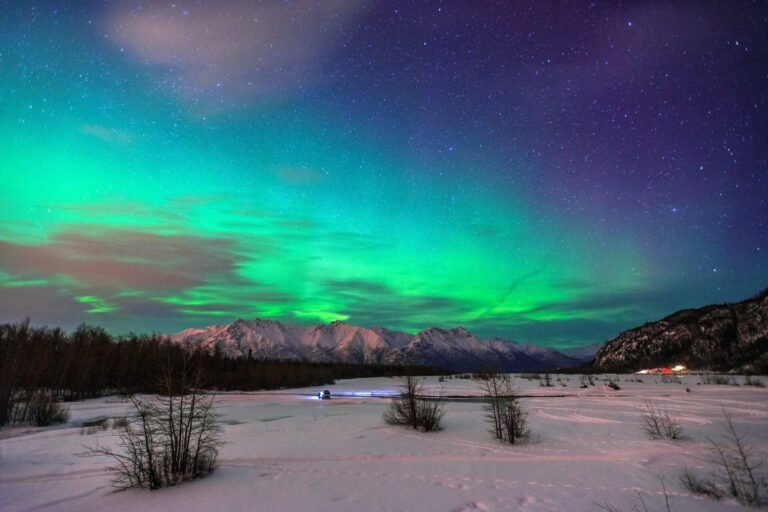Alaska, with its breathtaking landscapes and diverse wildlife, is a dream destination for many travelers. Though, the unique climate of this vast state can considerably affect your experience. Whether you’re hoping to witness the dazzling Northern Lights, hike through stunning national parks, or embark on thrilling adventures like dog sledding, understanding the best time to visit is essential to make the most of your journey. In this guide,we’ll explore the various seasons and the weather conditions they bring,helping you navigate Alaska’s climate and plan your visit accordingly.We understand that each traveler has different priorities, be it mild temperatures for cozy explorations or the vibrant colors of autumn. Our goal is to provide you with the insights you need to choose the perfect time to experience Alaska’s unparalleled beauty. So,grab your sense of adventure,and let’s dive into the best times to embrace all that this extraordinary state has to offer!
Understanding Alaskas Seasonal Weather Patterns for a Memorable Trip
Alaska’s weather is a captivating tapestry of seasonal patterns that shape outdoor experiences and sightseeing opportunities. With long, sunlit days in the summer and a stark but breathtakingly stunning winter landscape, understanding these shifts can significantly enhance your trip. Each season offers a unique allure:
- Spring (March to May): Witness nature’s rebirth as flowers bloom and wildlife emerges.Temperatures begin to rise, averaging between 30°F to 50°F, making it ideal for mild hikes and wildlife spotting.
- Summer (June to August): Embrace the warmth with temperatures ranging from 60°F to 80°F. Long days provide ample sunlight for exploring stunning national parks, fishing in clear waters, or indulging in adventurous activities like kayaking.
- Autumn (September to November): Enjoy the vibrant foliage and crisp air. Temperatures cool down, averaging 30°F to 60°F, perfect for photography as the landscape transforms into a mosaic of reds, oranges, and yellows.
- Winter (December to February): Adorned in snow,Alaska reveals a different kind of magic. With temperatures often below freezing, this season is perfect for winter sports such as skiing and dog sledding, as well as witnessing the stunning Northern Lights.
The following table summarizes average temperatures and activities suitable for each season:
| Season | Average Temperature (°F) | Recommended Activities |
|---|---|---|
| spring | 30°F – 50°F | Wildlife Viewing, Mild Hiking |
| summer | 60°F - 80°F | National Park Tours, Fishing, Kayaking |
| Autumn | 30°F - 60°F | Photography, Scenic Drives |
| Winter | Below Freezing | Skiing, Dog Sledding, Northern Lights |
By planning your visit to align with these seasonal wonders, you’ll ensure a full experience of Alaska’s incredible diversity.Whether you’re channeling the lively energy of summer hikes or soaking in the serene beauty of a winter wonderland, each season offers something special for travelers, making your journey with Gezify unforgettable.
Optimal Timing for Wildlife Viewing and Outdoor Activities in Alaska
For an unforgettable wildlife viewing and outdoor experience in Alaska, choosing the right season is essential. Generally, the summer months of June to August offer the best opportunities to observe the state’s diverse wildlife in their natural habitats.During this period, animals such as bears, moose, and eagles are most active. Here’s when to catch the best sights:
- Late Spring (May): Great for bird watching, as migratory species return, and for spotting brown bears emerging from hibernation.
- Summer (June to august): Peak season for wildlife encounters. Look out for humpback whales along the coast, calving glaciers, and vibrant wildflowers dotting the landscapes.
- Fall (September to October): An excellent time for witnessing the breathtaking colors of nature as leaves change. Moose are especially active as they prepare for winter.
For outdoor activities, the summer also reigns supreme, allowing everything from hiking and kayaking to fishing, with long daylight hours offering plenty of time to explore Alaska’s stunning vistas. For those interested in fishing, late June through early September provides outstanding salmon runs, perfect for both seasoned anglers and novices. Consider this table for a rapid glance at the optimal months for various activities:
| Activity | Optimal Month(s) |
|---|---|
| Wildlife Viewing | June - August |
| bird Watching | May – July |
| Fishing | June – September |
| Hiking | june – September |
Ultimately, if you’re looking to merge adventure with natural beauty, planning your trip to Alaska during these peak times can enhance your experience immensely. With proper timing, you will not only maximize your chances to witness stunning wildlife but also make the most of Alaska’s outdoor offerings, all while soaking in the spectacular landscapes that make this state a bucket-list destination shared on Gezify.
choosing the best time to visit Alaska depends heavily on your preferences for weather and activities. Whether you crave the vibrant life of summer or the serene beauty of winter, Alaska offers unique experiences year-round. As you plan your journey, consider what each season brings, and embrace the stunning landscapes and diverse wildlife that await. With careful planning, your Alaskan adventure can become a cherished memory, showcasing the breathtaking beauty of this remarkable state in all its glory. Happy travels!
